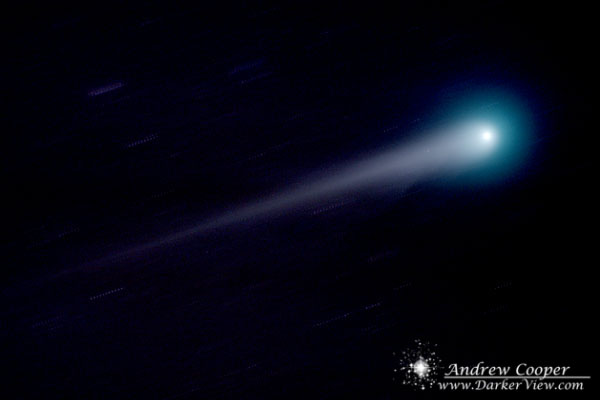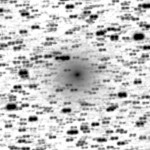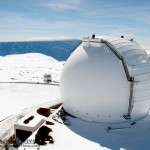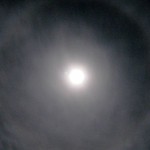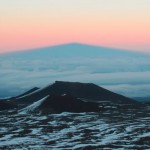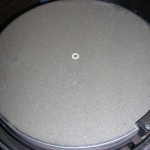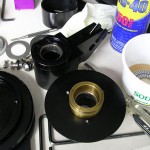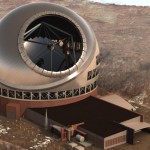A big milestone arrived this week. The launch telescope arrived from the manufacturer. It is an impressive instrument itself, a half meter aperture, an extraordinarily short focal length, made to very exacting precisions, even for optics. It is a cassegrain design with an focal ratio of f/1. The primary is coated with a custom coating designed for maximum reflectance at the 589nm sodium D line, where the laser will operate. This gives the primary a notably orange cast that is quite beautiful. The entire telescope is enclosed in an airtight aluminum shell with the optics supported on a carbon fiber frame within.

The entire assembly will mount behind the secondary of K1. This is different than the current laser in Keck 2 that is emitted from a launch telescope along the side of the main telescope. Having the laser on the side creates some problems for the AO wavefront controller, the artificial guidestar can be elongated by parallax when seen from the other side of a ten meter telescope. Having the laser launched from the center of the main telescope is a far more optimal solution. But doing that takes a far more difficult to design and build launch telescope as it has to be extraordinarily compact.
We expect delivery of the laser itself in May. Our laser engineer has been working with the laser manufacturer to insure it meets all specifications. Reports indicate it is not only meeting those specifications, but surpassing them. When we take delivery there will be a period of testing before the equipment is trucked to the mountain for installation in its final position.
The coming week will be fun, need to string a new set of cables to the Keck 1 secondary mirror. This means 150 feet of cabling from the Nasmyth Deck, up the tubular structure of the telescope and across the spider to the secondary. On a ten meter telescope this means a lot of high work from the personnel bucket of the jib crane among the girders of the telescope. This is going to be fun!

